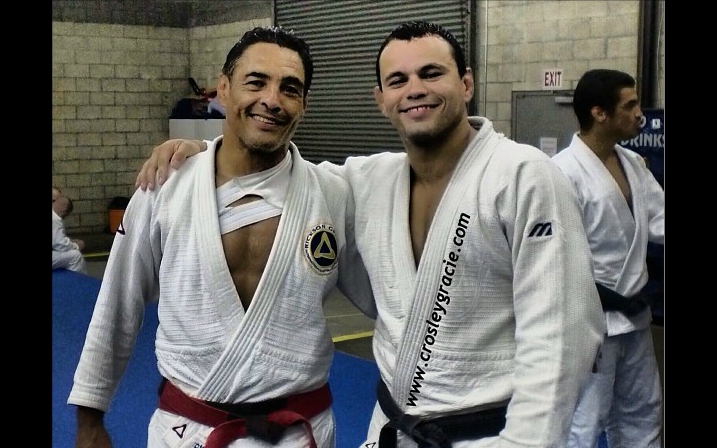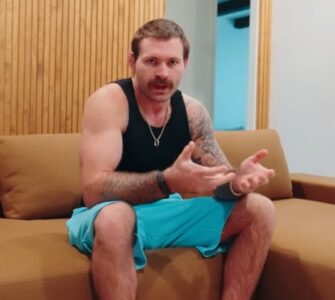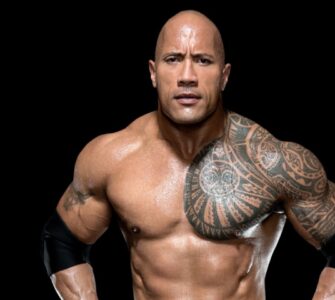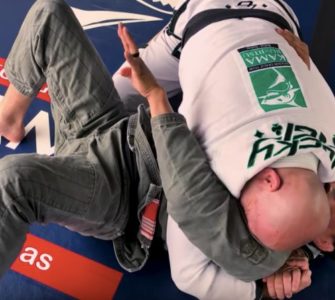Guest post by Ben Whybrow Bsc (Physiotherapy), MCSP, ACPSEM. Ben is a Musculoskeletal and Sports Physiotherapist living and working in Cambridgeshire, graduating from the University of Hertfordshire in 2014. In addition to this Ben is the Squad Physiotherapist for Anglia Ruskin University Judo, one of the leading university judo programs in Great Britain, producing athletes that compete at National, European and International level. Ben’s website is thejudophysio.com.
Ok this one has been a long time coming.
When I started out with ARU Judo last year one of the goals aside from dealing with the inevitable traumatic injuries that would occur was to set up an injury prevention and prehabilitation plan to hopefully reduce and prevent non-contact injuries that the athletes could develop. One for the leg (which will come at a later time) and one for the shoulder.
And after many combined hours (maybe even days) of internet searching, medical article reading and exercise experimenting I have finally produced the first complete version of the shoulder injury prevention programme for 2016. While I was going through the research it became apparent that similar problems occur in Brazilian Jiu-Jitsu (BJJ) as well (especially pass fighters), hence this programme can be used for both Judo and BJJ athletes.
Now the shoulder is one of the most frequently injured body parts in Judo and BJJ, usually occurring as a traumatic injury or atraumatic injury.
Traumatic shoulder injuries in judo and BJJ usually happen from standing fighting where the injured person has fallen and landed directly onto their shoulder or outstretched arm (ippon seio nage is a big culprit for this), or in groundwork when the arm is caught in an awkward position or the injured person refuses to tap to an arm lock.
Aside from teaching proper landing techniques or encouraging fighters to tap at the right time, these injuries are generally unpreventable. The extent of the injury can vary from fractures and dislocations down to small strains and bruises (most likely). At the end of the day they are contact sports and direct trauma will inevitably happen, plus if a fighter is in the Olympic final they’ll do anything to avoid losing.
Atraumatic injuries are those where there has not been any direct trauma or specific incident from which the pain has started, these are generally the pains that start small and get steadily worse over time. These injuries will typically affect the soft tissue due to the causes which I will describe below, though there is always the small risk of a stress fracture.
Atraumatic injuries typically occur as the soft tissues (e.g. Muscles, tendons, ligaments etc) around the shoulder are unable to tolerate the effort that the brain and the body are asking them to achieve. Many factors can overload the soft tissues such as; rapid increases in training rate/intensity, under-training before intense competitive activity, repeated intense activity without sufficient rest. The list goes on and there is much more detail to this, but I’ll save general training injury prevention for another time.
The good news though is that a lot of atraumatic shoulder injuries in Judo and BJJ are preventable with the big two adjustable contributing factors being the rotator cuff and shoulder blade control.
The rotator cuff is a set of four small muscles that sit around the ball and socket joint of the shoulder, where there main job is to help control and stabilise the shoulder joint during arm movement. On top of this they also help out with rotation movements of the shoulder ( because they are the “rotator” cuff, get it?).
Now in rotator cuff problems what can happen is that the part of the rotator cuff that does inward rotation becomes a lot stronger than the part does outward rotation, which has been found to occur in judo athletes. As a result this can lead to reduced ability for the muscles to control and stabilise the shoulder joint which could in turn lead to problems developing.
In grip fighting especially this group of muscles are required to work especially hard, and if they are not trained properly then they will fatigue quickly which may be the difference between winning and losing the fight. So how do we prevent this problem? By getting the rotator cuff strong and able to endure long stints of activity.
Shoulder blade control is a bit of a contentious issue in the physio and sports science world, especially in relation to shoulder pain, and I’m not going to start a debate now. But what we do know from anatomy is that as you raise your arm upwards your shoulder blade basically has to lean back so that you can bring your arm up to your head. Problems occur however when the ability of the shoulder blade to do this is reduced.
There are a few things that could potentially cause his to happen but the most likely and adjustable one is that the muscles in your lower shoulder blade (the ones that assist in the leaning back job) are too weak or become overpowered by the muscles at the top of the shoulder blade, which pull your shoulder blade forward and down instead, which has been found in athletes with atraumatic shoulder problems.
Also if there are problems with the rotator cuff as described above then the muscles of the shoulder blade have to work overtime to help control and stabilise the shoulder. If they are too weak then they could fatigue and again lead to some problems occurring.
Aim of the programme
The overall aim of this shoulder injury prevention programme is to increase the strength and endurance of the external rotator cuff muscles and lower scapular muscles.
This should help to maintain or improve the control and stability of the shoulder and as a result, hopefully reduce the amount of atraumatic shoulder injuries occurring.
As this is the no equipment version it can be done anytime anywhere (e.g. Gym, hotel room, back garden) without the need for any fancy equipment (I will do one with fancy gym equipment in the future).
 Basic shoulder principals
Basic shoulder principals
Before we get into the nitty gritty of the programme I’ll just run though a few principles in relation to maintaining general shoulder health for athletes.
• Avoid sitting in a static position with your shoulders rounded forwards for more than 1-2 hours. Fairly simple advice, although can be quite hard to achieve if you work in an office all day. By getting up and moving around every half hour or so it should prevent the tissue around your shoulder getting tight.
• Do an even amount of chest to back strengthening. Although a big chest may look good for the beach, you need to have strong back muscles to work against them. If your chest is too strong compared to your back then shoulder problems can develop.
• Vary the way you strengthen your arms, chest and back. Whether it be mixing between dumbbells, barbell or a smith machine, or just changing body position, variability in strengthening has been shown to reduce the monotony of a workout and injury risk.
• Don’t do any exercises that cause you pain or that you physically cannot achieve. Fairly common sense (hopefully).
• Don’t do any prolonged static stretches prior to your strength workout or training session. Over stretching a muscle reduces the amount of power it can produce, which is especially important in Judo & BJJ, and can increase injury risk in certain types of soft tissue. Static stretching after a workout or training session is ok.
• Ensure you give yourself adequate rest time between heavy strength or training sessions (roughly 24 hours). Not resting enough between hard sessions can actually increase the stress on the body, potentially resulting in loss of performance and ability rather than gains.
• If you are going to increase the amount or intensity of training then do it gradually over time. Rapid increases in training amount or intensity can put excessive demand on the body which it cannot handle, resulting in potential injuries occurring.
I will also say that although this programme focuses on the control and stability muscles of the shoulder, it does not replace the general arms, chest, back and general lower body strengthening you would expect an athlete to be doing as well.
The programme
This programme should ideally be done as a warm up prior to any shoulder workout or training session, and should take roughly 10-15 minutes. The weight you should use should only be about 1-2 kgs, a full water bottle is sufficient. The exercises can be done in any order, and only do the maximum repetitions you can achieve comfortably.
All of the exercises below produce large amount of external rotator cuff and lower shoulder activity activity, without much activation of the upper shoulder blade and other arm muscles.
Please see the video below:
The Push Up Plus
• Get into a press up position and straighten your arms so that your elbows cannot bend, turn your hands slightly out to the side and have them shoulder width apart, make sure they are close to your chest.
• Then let your body drop down slightly so that your shoulder blades come together, then push your body up as far as possible taking your shoulder blades apart and hold for roughly 5 secs, all the while ensuring that your arms remain straight.
• Once you have done one rep crawl slightly forwards, backwards or sideways and repeat moving position each time. Repeat for 1-2 minutes.
Twist & Raise
• In a press up position have the arm to be exercised across the chest, it can be holding a light weight if necessary.
• Then slowly over at least 5 seconds take it out to the side straightening the arm with your thumb pointing upwards, as you do so turn your trunk so that you facing the side of the moving arm.
• Hold for up to 5 seconds before slowly relaxing down over 5 seconds. Repeat 10-15 times each arm.
Superman
• Get into an all 4’s position and ensure that your back is straight.
• Slowly raise one arm straight out in front of you while at the same time straightening and raising the opposite side leg until they are both parallel with your body.
• Hold for up 10 seconds then slowly relax down in unison. Repeat 15-20 times.
Side Lying External/Internal Rotation
• In a side lying position resting on your lower arm and with your upper leg bent with the foot flat on the floor.
• Rest your upper arm elbow on the bent knee, with the elbow bent at roughly 90 degrees.
• Slowly rotate your arm upwards as far as possible, hold for 4-5seconds then slowly lower and rotate your arm down, go as far as possible and hold for 4-5 seconds, then repeat.
• It should take a minimum of 5 seconds when rotating the arm up or down.
• You are looking to do 10-15 repetitions on each arm.
Y’s (Full Can)
• Start by standing with your arms straight by your side holding onto light weights with your palms facing forwards and your thumbs pointing out to side.
• Slowly raise your straight arms upwards pointing away from your body over 5 seconds, and hold them at roughly chest height for 5 seconds, then slowly lower back down to your side over 5 seconds.
• Repeat 15-20 times.
And that’s about it feel free use it as much as you it like, if you think it’s good, bad or otherwise feel free to let me know.
Have a nice day.
Ben.
P.S. If you are a healthcare or sports science person and interested in the evidence behind all of this, feel free to click on & download the link below.



















